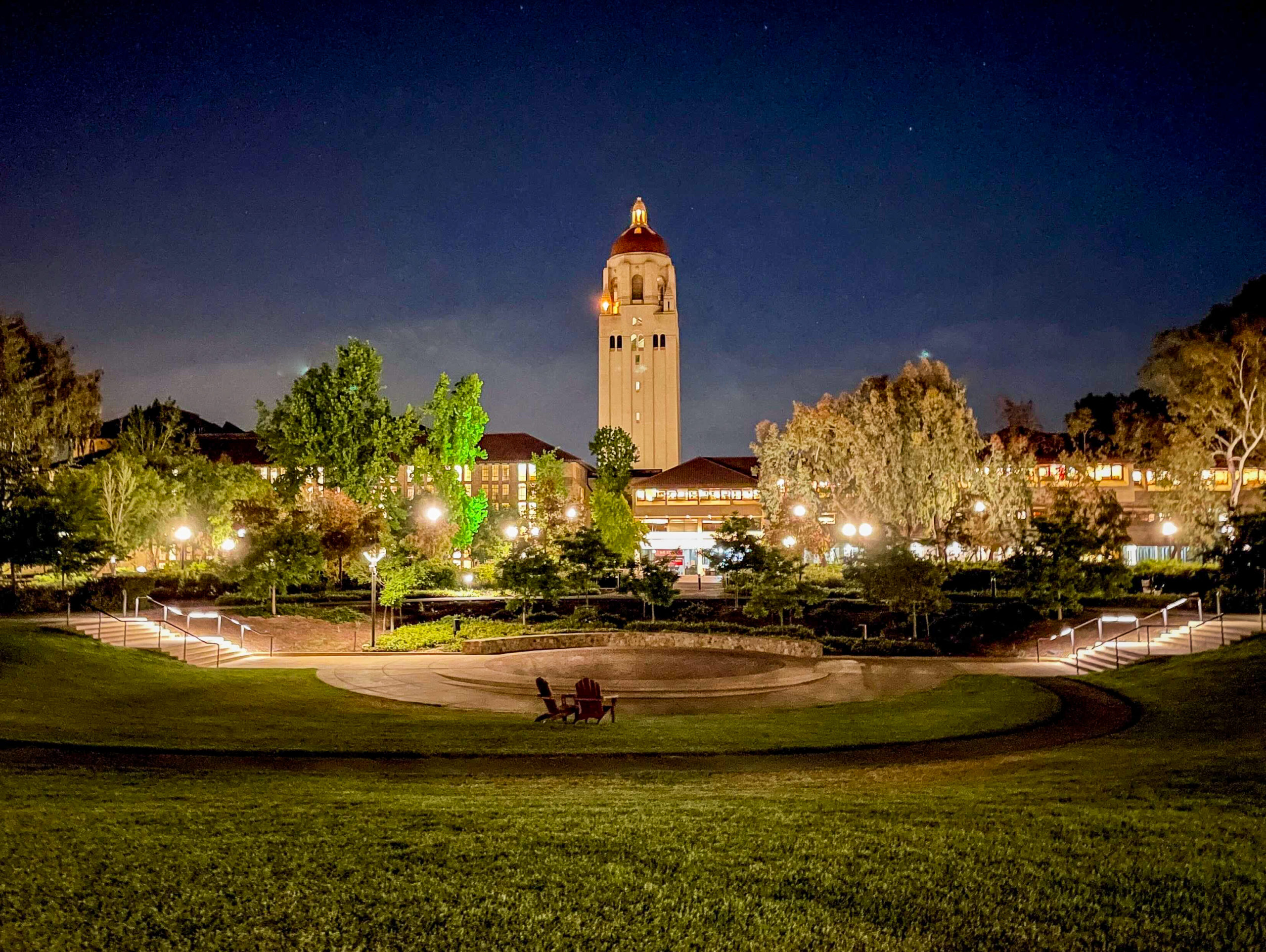Where does a walk on campus take us? Depending on where you start, you may pass anything from patches of yellowed grass, to an unassuming dorm building, to something you might see in the gallery of “Best Places to Visit at Stanford” on TripAdvisor. If it’s not the sandstone arcades and columns of Main Quad, then it is the Engineering Quad’s sleek, glassy design, the downhill slopes to the Oval, the ivy-covered terrace of Stanford Law School. For every expanse captured on camera, there is some quiet, treasured pocket of space — whether that’s the warm, inviting lounge of the Hume Center, or a comfortable nap in Meyer Green under the watchful shade of the “Churro” statue. At least there would be, if this were a write-up for a handmade travel blog of ideal study spaces, complete with lush, well-angled photographs at the most opportune time of the day. A space is much more than its aesthetic value — it encompasses how we commit to our work and how we remember it long afterwards.
The law terraces are sublime, until the sun goes down — then it’s just a ticking clock to see which body part can freeze first. Coho is ambient and upbeat until someone spills an iced latte across your keyboard, followed by a cascade of crumbs. To avoid the swells of voices that occasionally rise up in Huang Basement, we plug in our earbuds — but then the music distracts us, more captivating in its rhythm than whatever we have pulled up on our laptop screen.
What is our space? What makes one space the key to our answers, while another is essentially a self-imposed challenge of how fast time can slip down the drain? What better guides our focus: the background ambience of Zoom study rooms, or a playlist of ambiguous, peaceful sounds from which we can’t name a single song? Some of us can plow through an essay with music blasting at full volume, entrapped in freezing daylight; others can only helplessly reload our emails at the slightest disturbance in the background, or latch onto the first notification on our phone as a much-needed break from scraping away at p-sets.
Amid the omicron variant, mired neck-deep in midterms, we rarely agree on what makes an ideal space for dedication and attention to our studies. Perhaps we can agree that there has never been one. What is the point of a ranked list of study spots or the beauty of the photograph, if it all fades away when we try to put pen to paper?
A space of study is meant for focus. Losing ourselves in our work is a detachment of our mind from our senses; the sun-dappled ponds of Kingscote Gardens hold as much merit as the growing espresso stain on a table outside Coupa Cafe. Yet we are drawn to the aesthetic, the welcoming, warm designs. Perhaps it places us in a better mindset as a constant reminder that, regardless of the frustration of our studies, the space itself is always a source of comfort. The fluctuating buzz of life in the dining halls assures us that we are not alone in our challenges; our favorite playlist is our stabilizer and heartbeat. There is a reminder of other people’s spaces, and how they overlap with our own.
Beyond the sound and the sight, space is our memory. I first stepped foot into McClatchy Hall as a visitor nearly three years ago; it still amazes me that I can walk in now as a student. One may treasure the firepit near Lake Lagunita when the grass first ripples into rushes of green; their earliest dorms, the first class they ever had, the first stacks they lost themselves in — these all are immutable. With COVID, many of these spaces are sealed, their memories pinched away, and with them all the aesthetics and sounds that make their essence timeless. Space, in a way, is our legacy. It is a way to leave a trace of ourselves behind, and a way to reclaim that piece of ourselves if we desire so.
With isolation policies, the tragic losses of students, the volatile times that we shape ourselves in, how we approach our space as comfort, stability and even inspiration is something that extends beyond the four walls of a room, or the scenery outside. Every day we struggle to carve our space. We make minute adjustments to accommodate our preferences, and we change our space to invite others in. It is not an active decision so much as an innate one, and it is something always worth considering when it comes to how Stanford approaches its next objective in satisfying the values and needs of its students. Our space is what we make of it: not so much of where it is and how it looks, but the impressions that we gather and leave behind.
